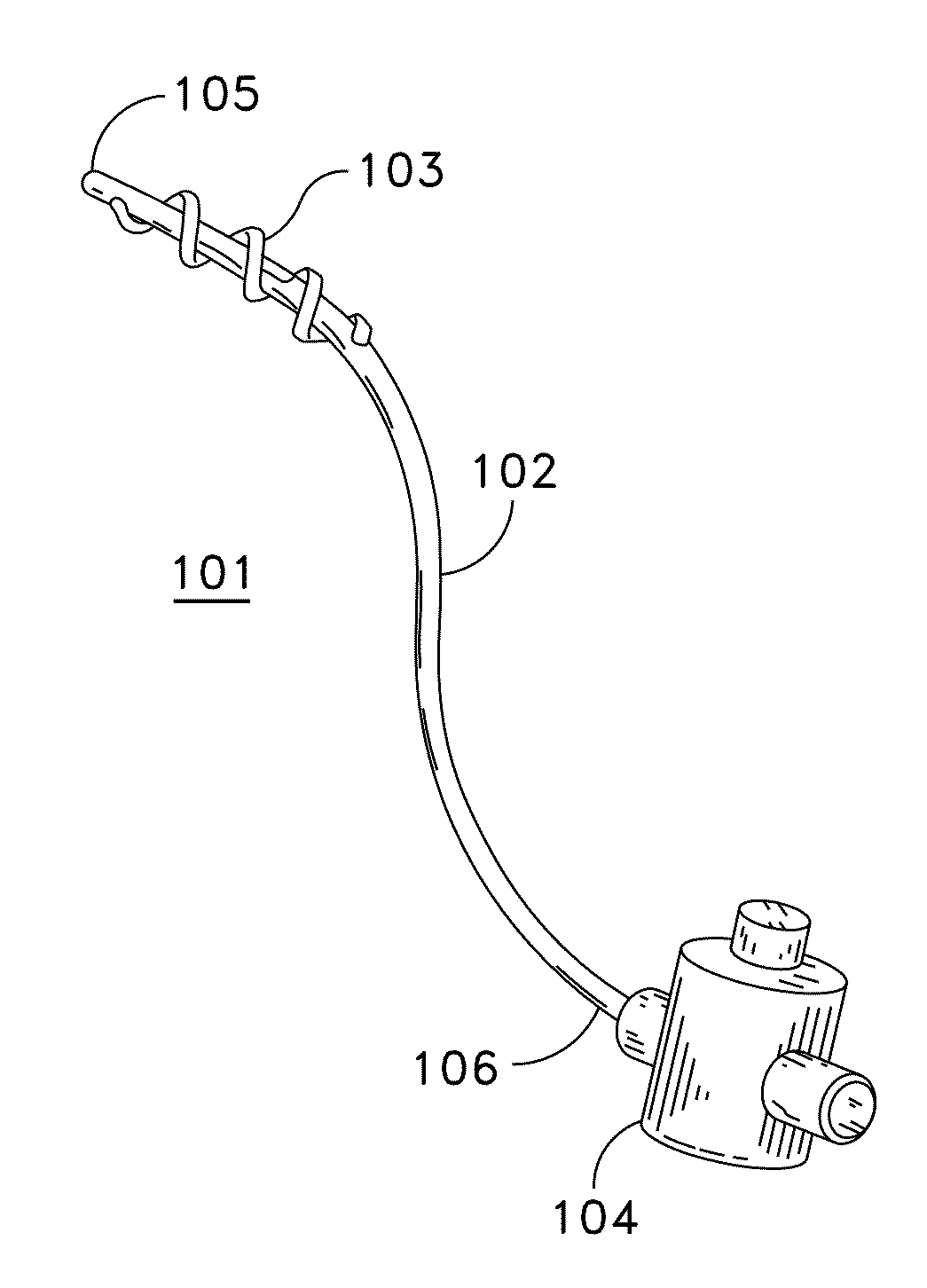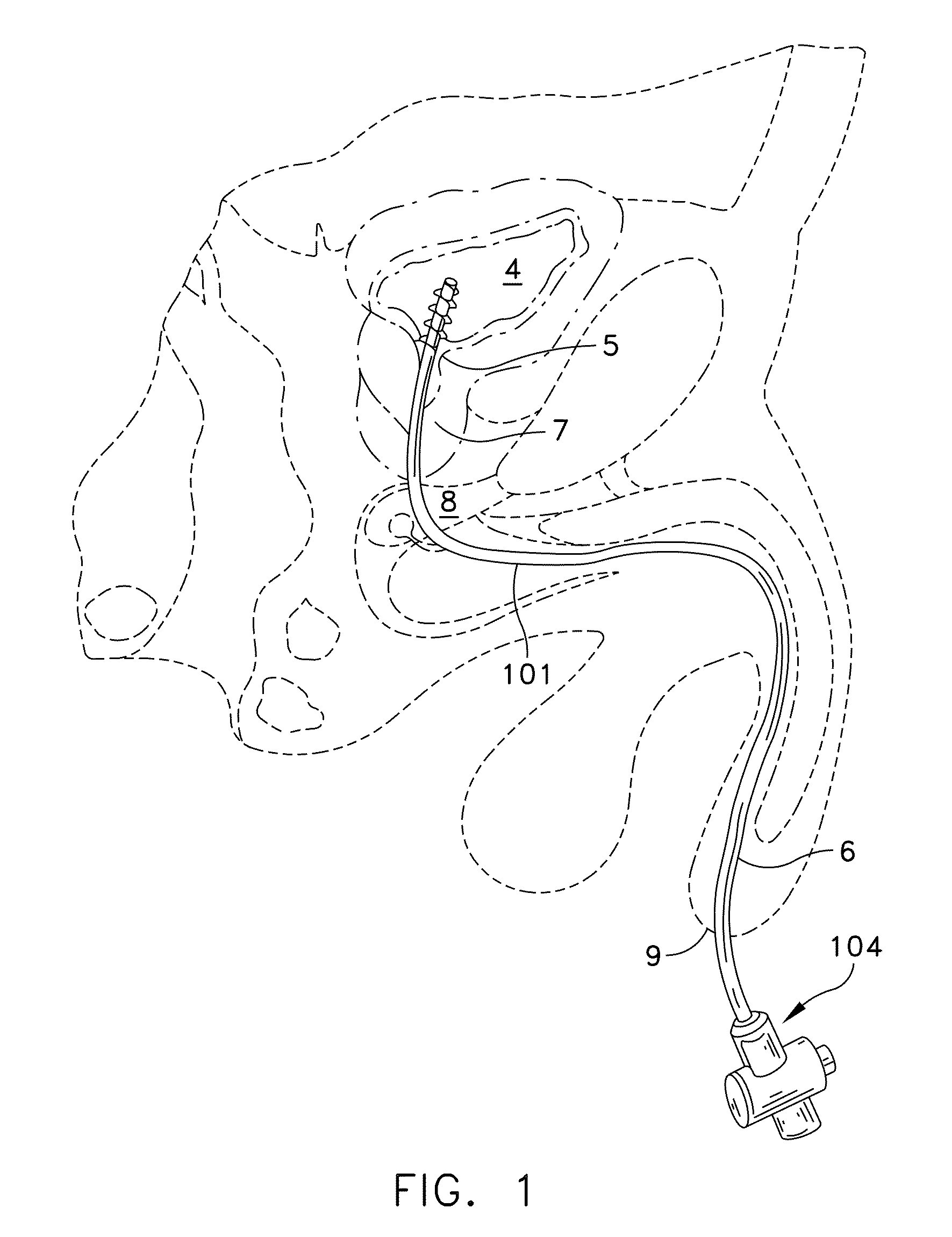However, during the 18th and 19th centuries,
catheter construction became more complex, with an intensified search taking place for an appropriate substance that would be at once flexible, non-irritating and functional.
Many variations were produced, but they all caused significant stress on the patient when these rigid devices were pushed into the
urethra.
The catheters of the prior art are generally large and stiff, difficult and uncomfortable to administer, and uncomfortable to wear for extended periods of time.
The difficulty, discomfort, risk of injury and infection, inhibition and inconvenience of the methods and apparatus of the prior art results in the deprivation, for many patients, of the freedom to work, play and travel as do unaffected people.
One is bladder outlet obstruction, and the other is failure of the nerves linking the bladder to the brain.
This condition, known as benign prostatic
hyperplasia (BPH), can cause a variety of obstructive symptoms, including urinary hesitancy, straining to void,
decreased size and force of the urinary
stream and, in extreme cases, complete
urinary retention possibly leading to renal failure.
Because of the high costs, medical risks and
quality of life compromises associated with TURP, new technologies have begun to challenge TURP's position as the
standard treatment for severe BPH.
However, these drugs generally do not improve symptoms for six to nine months
after treatment begins, and are not without side effects.
Men with urethral strictures also experience a limited ability to urinate, which may cause extreme discomfort and, if left untreated, may cause complications that necessitate catheterization.
But difficulty in placement has always been inherent in this design.
A 14 French or smaller
Foley catheter is rarely used because catheters of this size lack the column strength needed to push the
catheter along the full length of the
urethra into the bladder.
The larger French Foley catheters are painful to place, uncomfortable when indwelling, and require a highly-skilled care provider to insert.
This stiffness can make catheterization difficult in men because the
male urethra is long and has an acute bend within the
prostate.
A problem with this form of distal end emplacement through the bladder wall is that it is only unidirectional; that is, it only resists the inadvertent pulling out of the tip of the
catheter from the wall of the bladder, while allowing the catheter to freely pass further into the bladder, and to back out up to the point of the containment structure.
This continuing catheter motion in and out of the bladder puncture site may irritate tissue and cause infection or other difficulty at the bladder-catheter interface.
Urine is especially irritating to most parts of the
human body that are outside of the urinary tract.
Surgical treatment of strictures involves surgical risks as well as complications, including infection, bleeding and
restenosis, which frequently requires further treatment.
This push-to-advance method necessitates a stiff shaft which has all the same limitations as traditional catheters.
Occluders of the prior art are constructed and applied with the same push-to-advance concept as the catheters and dilators described above, and hence suffer from the same disadvantages.
The
stent, being a mesh, has openings that allow the tissue to grow through the wall, making removal difficult and causing encrustation that reduces
urine flow.
Both of the aforementioned designs are complicated to install and difficult to remove and, if the valve fails, leaves the patient in a painful and dangerous situation.
There has been patent activity in the prior art indicating dissatisfaction with the push-to-advance methodology.
In all cases, these disclosures fail to recognize that the basic push-to-advance technique is fundamentally flawed and should be abandoned, and fail to resolve the critical features of structure necessary for rotational advancement as a substitute for the push-to-advance method.
Such disclosures likewise reveal a reliance on push-in methods, or an assumption that such structures can be pulled out without regard to the spiral features, again failing to recognize rotation as a viable substitute for pushing, and failing to resolve the critical features of structure necessary for effective rotational advancement.
As a further indication of the failure of the prior art to provide effective improvements to traditional push-in methods, there is no apparent indication among the products commercially available, or in the medical practices known to the Applicants, that any of these spirally-ornamented devices were ever found to be clinically viable.
This device takes a high level of skill to use, is difficult to maneuver and can be very painful for the patient, due to the basic push-to-advance design that has not changed since the device was invented in the early 1960's.
The so-called “
insertion tube”, which makes up the rest of the endoscope's 60-150 cm length, is not capable of controlled deflection.
Even still, the procedure can be very painful for the patient, making
sedation necessary.
This is due to the inherent deficiencies in the “push-to-advance” design.
Due to the significant differences in both the diameters and lengths of the small bowel and the large bowel, traditional endoscopes and the methods used in large bowel applications are not ideal for investigating the small bowel.
This is because of the need to gather (or
pleat) the small bowel onto the endoscope, which is difficult to accomplish using traditional endoscopes.
This process is extremely time-consuming for both the physician performing the procedure and the patient undergoing it.
Similarly, the longer the procedure, the greater the risk of
anesthesia-related complications.
 Login to View More
Login to View More  Login to View More
Login to View More 


